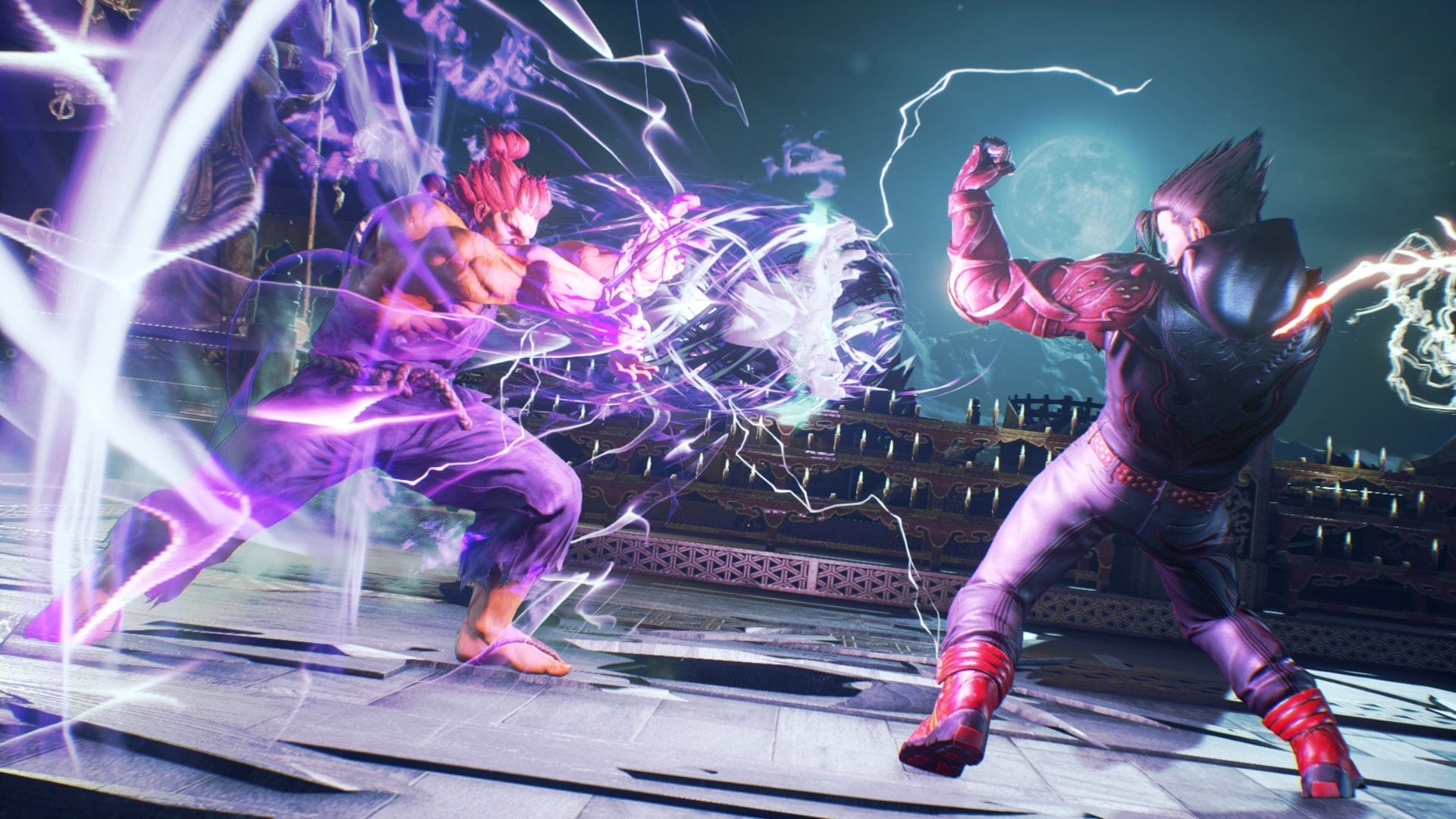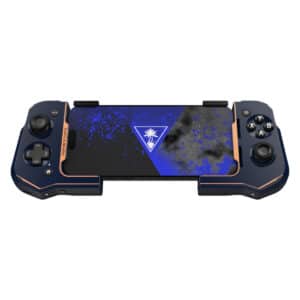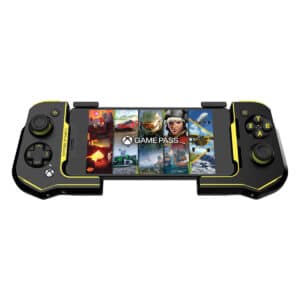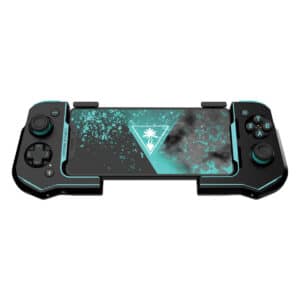The History of the Game Engine: Part 9 – Fight!
Street Fighter, Mortal Kombat, Soulcalibur, Tekken, Dead or Alive… The list of one-on-one fighting games that have spawned multiple sequels goes on. But what makes this much-beloved genre tick?
Punching and Kicking – The Early Days
Like most computer game genres, if we jump back to the 1980s and the dawn of fighting games there is very little cohesion in the way they were developed, and certainly no sign of a game engine.
For the fighting genre, it all really starts with the arcade game Karate Champ – Player vs. Player in 1984. Unlike many other gaming genres where home versions ruled supreme, it was the arcade that really defined the fighting game. It’s competitive by nature, and the idea that you can stand at the cabinet and effectively defend your title for the night had players willing to pump piles of change into the machines. Thus, though there had been attempts at boxing games before Karate Champ (including a very early black-and-white 70s game, Heavyweight Champ where you used boxing glove controllers), it was with this dual-joystick colourful arcade game based around the evocative oriental art of Karate that the genre really took off.
Popular Products
The Power of Bruce Lee
The 70s and 80s were a time where martial arts were all the rage in the western world. One of the very first zeitgeist-defining exports from Japan, martial arts-inspired the imagination of kids, teenagers, and adults throughout the UK and USA. The most famous figure was, of course, Bruce Lee.
Everyone wanted to be Bruce Lee (well, maybe not everyone, but quite a lot of people…) and plenty of kids would make fools of themselves as they ‘karate kicked’ and ‘karate chopped’ their way around playgrounds.
At the arcade though, those dreams could find some sort of (virtual, at least) reality.
Karate Champ gave way to Yie Ar Kung-Fu, worse in one way because it was a single-player game, but significant in so many others. Yie Ar Kung-Fu let you be a Bruce Lee-type character and introduced the idea of enemies with special moves and, more importantly, the health bar to determine when you died.
Between the two arcade hits, the fighting genre was finding its style.
A Splattering of Fighting Games
Once the box was opened, out came the fighting games. Shifting for a short while from the arcade to home consoles and computers like the ZX Spectrum, Commodore 64 and Apple II, one-on-one fighters started to develop. Titles like Karateka (written by Jordan Mechner, who would then go on to develop Prince of Persia) and Way of the Exploding Fist were both successes on home machines. They were followed up by the humorous masterpiece that is Archer Maclean’s International Karate+ (IK+), with its three-fighter system and smooth animation.
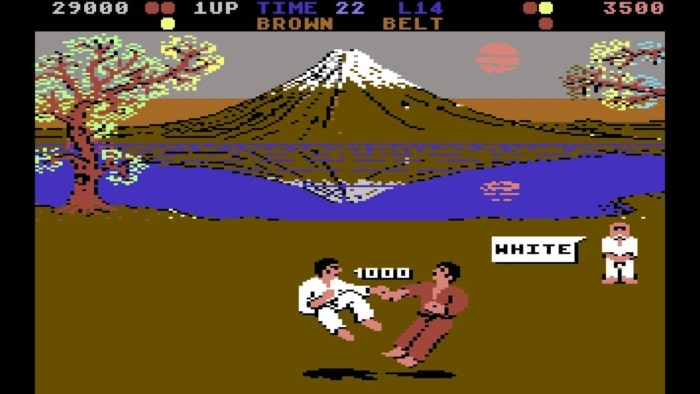
It wasn’t all karate any longer though, with titles such as Barbarian proving that fighting games are great if you have a sword, too. Plus, when you have a sword you can decapitate your opponent, which was both shocking and fun in equal measure.
Soon though, the world was rocked by something even bigger, and inarguably better than all its predecessors.
Street Fighter II
Everything changed when Street Fighter II found its way into arcades. Big and bold cartoony graphics, a range of special moves that took a precise sequence of inputs to work, combos, a great roster of characters and much more, Street Fighter II was a seminal moment for fighting games.
It was a sequel, but the first Street Fighter hadn’t made much impact and was boring to play by comparison. SFII was fast, furious, and rewarded you for repeat gameplay as you began to really get to grips with your chosen character and their controls.
Where Karate Champ – Player vs. Player had introduced the idea of people huddling around an arcade cabinet competing with each other through fists and feet, Street Fighter II took it to a whole new level.
Behind the Fighters
By the time of Street Fighter II the world of programming and development was well established. So, was there a game engine to which this seminal title owes its due?
The answer is no, and sort of. The development team for SFII had worked previously on Final Fight which was one of the more successful side-scrolling beat ‘em up games of its time. Putting SFII and Final Fight side by side it is easy to see how many elements of the first game found their way into the one-on-one vs. game, including some defining characteristics such as the six-button arcade controls.
But for Street Fighter II everything was programmed individually. If there were internal tools to help this process then they have been little discussed in the years since. So, no official engine, perhaps, but a judicious amount of reused code. Notice how the characters of Ken and Ryu share move sets, how Dhalsim functions in a similar way despite his very different character design, and how Sagat—who was non-playable at the time—features a near-identical catalogue of moves.
It’s this reuse of code that would eventually morph into game engines in the future, but here, in 1991, the official idea of a fighting game engine is still far away.
Mortal Kombat
On the other side of the world, having seen the success of Street Fighter II and believing they can definitely do better, American developers Midway wanted in. Using digitised graphics, another huge dose of Bruce Lee admiration, and the most irreverent attitude to violence in computer games to date, Ed Boon and his three teammates entered the arena.
Mortal Kombat managed to do exactly what its creators wanted and positioned itself as a true rival to the Japanese fighting giant. You can read more about its story here.
Again, though, there was no official engine for Mortal Kombat—it was programmed from the ground up. Mortal Kombat 2 wouldn’t suffer the same fate though, as it was developed using all the work done from its predecessor. This normal process of iteration and subsequent development became the basis for fighting game sequels, each one more of an update on the one that came before, rather than a full-blown game developed in its entirety.
The World of Bootleg Fighters
Arcade smash hits like Mortal Kombat and Street Fighter II were heavily in demand by players for their home consoles. Everyone wanted to be able to challenge their friends and family to a duel without needing to spend a vast fortune standing at an arcade machine to do so. Of course, the companies who had developed the original games were quick to put teams on the conversions, writing some impressive versions of their games, such as Mortal Kombat on the Sega Megadrive, and the SNES version of Street Fighter II, both of which were excellent ports worthy of their titles.
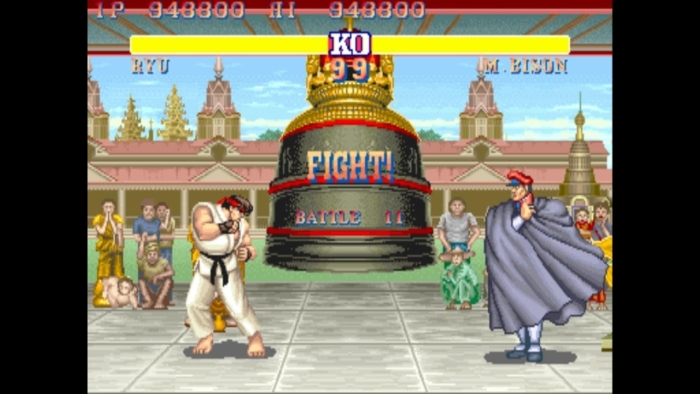
For those with an older console though, such as the 8-bit NES, were left adrift. After all, it was nearly impossible to make a low-end copy of a game like Mortal Kombat without sacrificing much of what made it great to begin with.
Enter the pirate coders.
With fighting games such a hot commodity, and names like Street Fighter sure to draw in many sales, these bootleg coders were only too happy to provide a service.
It’s of interest to us thanks to the work of the Hummer Team, led by Hummer Cheng. This Taiwanese group developed a game engine that would enable them to make quick and dirty ports of top-end fighting games such as Street Fighter II and Mortal Kombat. It was known as the Street Fighter II engine, or, sometimes, the Kart Fighter engine after their strange Super Mario Kart/fighting game mashup, Kart Fighter.
Now, let’s not pretend that it’s anything other than it was. Hummer’s engine was relatively poor quality, and the games looked nothing like the originals, but they provided NES owners with games featuring the characters they saw at the arcade doing the moves they saw at the arcade. Sort of.
But it was one of the earliest known fighting game engines to be well utilised and, for that, we thank them.
Fighting in the Third Dimension
In 1993, Sega upped the ante with their new arcade game, Virtua Fighter. Developed by AM2 using their internal game engine tools that had been previously used on the racing sim, 1992’s Virtua Racing. Virtua Fighter was based on the Model 1 arcade hardware, the first that was dedicated to 3D graphics.
It ushered in a whole new era for fighting games, offering depth to an experience that had previously been heavily two-dimensional. Virtua Fighter allowed you to sidestep, shifting the battleground slightly and adding (literally) an entirely new dimension to the games. While Street Fighter II and Mortal Kombat pushed heavily on the ideas of fantasy and entertainment for their games, Virtua Fighter was closer to a simulation of actual physical combat. There were no fireballs or fatalities here, although some of the characters (Kage, I’m looking at you) were able to ignore gravity in some of the most ludicrous ways. That backflip-kick is insane!
While it was coded in a completely independent way to the previous generation of fighting games, Virtua Fighter did share many similarities in its programming, not least the use of a multi-button input to allow a range of moves and combos. It expanded on those games’ innovations of sequenced inputs for special moves, too, something that had now become a standard for fighting titles.
The Playstation Era
Virtua Fighter opened a door and the Playstation walked firmly and confidently through it. If the NES was the console for platform lovers, and the SNES the machine that really brought Japanese role-playing games to the world, then the Playstation was the console for one-on-one fighting game aficionados.
In fact, the Playstation owes its 3D capabilities almost entirely to Virtua Fighter. Former Sony Computer Entertainment chairman, Shigeo Maruyama, told in a 2012 Tokyo event how the huge popularity of Sega’s fighting title in the arcades changed the console’s direction from being based on 2D-hardware to 3D.
“Once Virtua Fighter was out, the direction of the PlayStation became instantly clear.” – Shigeo Maruyama, 2012
Right from the onset, fighting games dominated the Playstation. The very first European demo disc, bundled with the early machines, featured Battle Arena Toshinden, a 3D weapons-based martial arts fighter that owed much to Virtual Fighter and really pushed the idea of sidestepping and using that 3D space. But it was with Tekken that the 3D wing of the genre really found success.
Tekken was huge. It was originally developed as an arcade game using the Namco System 11 architecture, an arcade board that was created with Sony and was directly based on the Playstation, but it was on the home consoles where it found a true footing.
It was soon followed by a sequel, utilising an iterative version of its own codebase, and then led on to Soul Edge/Soul Blade, another hugely successful 3D Playstation fighting series (Soul Edge was to become Soulcalibur).
Here we see a true use of a game engine being properly developed in the fighting genre. There is no doubt that Tekken and Soul Edge share code, a fact that’s further hammered home by the inclusion of the character Yoshimitsu in both franchises. Though not officially named, the Tekken engine adapts well to make, in Soulcalibur, the most successful weapons-based fighting game series of all time.
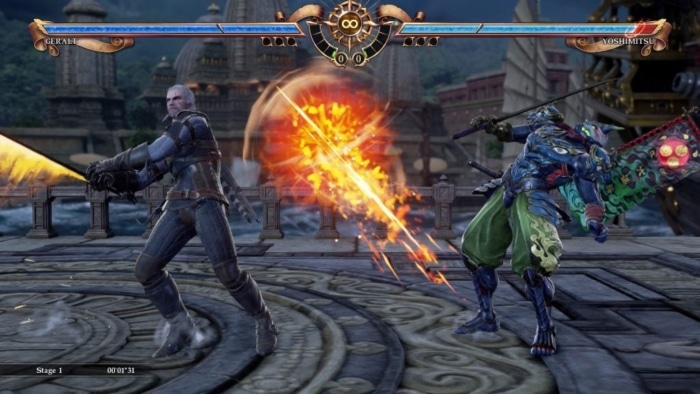
2D in a 3D World
Just because the latest technology was 3D didn’t mean players (or developers) were willing to give up on their love for large 2D sprite-based fighting. The shift was there, for sure, but titles such as X-Men vs. Street Fighter (the first in the popular Marvel vs. Capcom series) showed that there was still a lot of longevity in 2D fighting games.
It was M.U.G.E.N. that was to hold the torch, though. Finally, there was a game engine that would allow the creation of 2D fighting games. M.U.G.E.N. was (and still is) a true user-centric game engine, focussed on delivering tools to enable creators to make fighting games without needing to go back to the drawing board.
Available initially for MS-DOS machines before finding ports for all major computer operating systems, M.U.G.E.N. thrived, building its own community of passionate game creators. Though from very humble beginnings (its developers even had to do some early crowdfunding to afford a licensed compiler to make it available for Windows), M.U.G.E.N. was hugely successful. Now able to focus on the assets (graphics, moves, etc.) involved in the games, fledgling game designers were free to allow their creativity free rein. This opportunity meant a whole slew of fan-based fighting games appeared, from Team Sonic Fighters (featuring Sega’s famous hedgehog and pals) to Anime Jump Ultimate Stars Battle (which features characters from anime series like Fairy Tail, One Piece, Bleach and more), as well as fan versions of real titles, such as Mortal Kombat Project which is so polished as to look professionally created. One particular shining gem may be Kart Fighter Remake, itself a homage to the bootleg Kart Fighter mentioned earlier!
Despite its huge popularity with fighting game enthusiasts, M.U.G.E.N. remains a fan-based community project and hasn’t stretched to use in the professional world of published computer games. It is still very much in use today.
Half a Dimension
3D graphics with 2D sensibilities? As the technology improved, so did the players expectation that everything would look as photo-realistic as possible. For series such as Street Fighter, this meant a move from their cartoony two-dimensional sprites to more solid (but still beautifully cartoony) 3D character models.
By the time Street Fighter IV came along, there wasn’t even thought about sticking in the flat realm of 2D. But what would turning the game into a 3D title do to its gameplay? For all the love for Tekken and Dead or Alive did Capcom want to turn their beloved franchise into a clone?
Fresh In
Enter the world of two-and-a-half dimensions. 2.5D provides a bridge between the graphical expectations of a 3D system and the gameplay of a 2D game. Street Fighter IV managed this beautifully, offering a modern-looking take on the classic game without sacrificing the definitive gameplay that made it so successful. There it remains, alongside such titles as Marvel vs. Capcom 3 and its original stablemate, Mortal Kombat.
And Then There Was Unreal
In part five of this series, we talked about not reinventing the wheel. As the industry moved through the era of the Playstation 3 / Xbox 360, the idea of spending hundreds of thousands of hours developing your own engines was becoming less and less fashionable.
The big series dabbled in other engines. Tekken 6 used the little known Octave engine, which specialised in beautiful water effects and gave the game a unique graphical feel, while Street Fighter IV was rumoured to use Capcom’s proprietary MT Framework, though no official word confirms this.
But they soon all came to Unreal. Of the bigger franchises, Mortal Kombat was first, utilising Unreal 3 for the Mortal Kombat vs. DC Universe and then the 2011 version of the game, known simply as Mortal Kombat. Midway’s developers adapted the engine significantly but relied on Unreal’s significant experience for the majority of the core functionality.
In 2014, Capcom moved to Unreal 4 for Street Fighter V which was released two years later, and then, in 2017, Tekken 7 jumped too, citing the engine’s impressive ability to work across multiple platforms. With Tekken comes its sibling, the Soulcalibur series, again now on Unreal 4.
Of all the greats, Virtua Fighter remains defiant, using the Dragon engine in its latest iteration, Virtua Fighter 5 – Ultimate Showdown. Dragon was developed for the Yakuza series of games and was used to breathe a new lease of life into the 2021 version of Virtua Fighter 5 (originally released in 2012). One other standout is Dead or Alive, a series that spawned from the original Virtua Fighter and also eschews Unreal in favour of its own in-house engine recently developed at great expense in the hope that it gives Koei Tecmo an edge in a competitive industry.
A few rebels notwithstanding, it looks like the future of fighting games lies with Unreal, allowing the game developers the ability to concentrate on gameplay while the gurus at Epic Games make it all look and work beautifully.
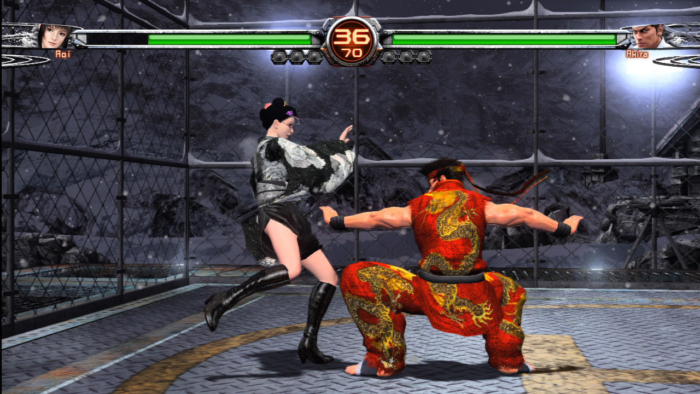
Next Time…
It’s all very well looking at these games and the engines behind them, but how does a developer actually use a game engine? Join us next time when we explore the process of working with a game engine.
Popular Products
References
Streetfighter II Developer Interview at Capcom
Doomkid’s “Every Hummer Team game” YouTube Video

